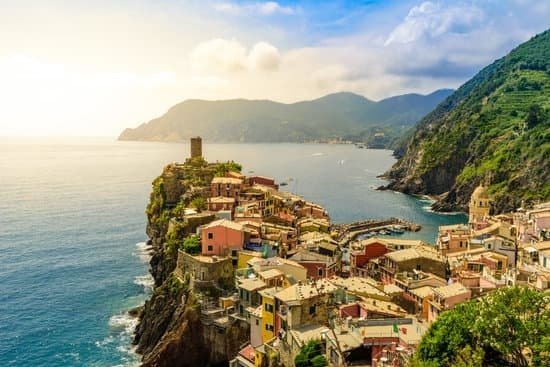Italy is a timeless destination that continues to attract travelers from around the world with its rich history, stunning architecture, delectable cuisine, and picturesque landscapes. One common question that often arises when considering a trip to Italy is: is it cheap to travel to Italy? In this article, we will delve into the various aspects of traveling to Italy on a budget while still experiencing all that this beautiful country has to offer.
When it comes to transportation, the cost of getting to and around Italy can vary depending on your preferences and itinerary. From airfare to within-country transportation options like trains, buses, and car rentals, there are ways to navigate Italy without breaking the bank. We will explore different modes of transportation and provide tips on how to save money while getting around during your stay in Italy.
Accommodation is another key factor in the overall cost of your trip. By examining the pricing of hotels, hostels or Airbnb in major Italian cities and exploring alternative lodging options for budget-conscious travelers, we aim to help you find affordable accommodations that suit your needs. Additionally, we will offer recommendations for saving money on where you stay without compromising comfort or convenience during your Italian adventure.
Cost of Transportation
Traveling to Italy can be an exciting experience, but one of the factors that travelers often consider is the cost of transportation. Whether you are flying into major Italian cities or moving around within the country, it’s essential to budget for transportation expenses. Here is a breakdown of the costs associated with traveling to and within Italy:
- Airfare: The cost of airfare to Italy varies depending on your departure location, time of booking, and season. On average, a round-trip ticket from the United States can range from $600 to $To find cheaper flights, consider booking in advance, being flexible with your travel dates, and looking out for deals or discounts.
- Train, Bus, and Car Rental: Once you are in Italy, you have various transportation options to explore different cities and regions. Taking trains is a popular choice for traveling between major cities like Rome, Florence, and Venice. The cost of train tickets can vary based on distance and class of service.
Alternatively, buses are a more economical option for short-distance travels. Renting a car gives you flexibility but can be expensive due to fuel costs and tolls. - Budget-Friendly Tips: To save money on transportation in Italy, consider purchasing rail passes if you plan to travel extensively by train. Opt for regional trains instead of high-speed ones for lower fares. Use public buses or trams within cities for affordable commuting. Additionally, carpooling services like BlaBlaCar offer shared rides at discounted rates.
Considering these factors will help you plan your transportation budget effectively when traveling to Italy. Even though airfare may be a significant expense upfront,is it cheap to travel to Italy offers various options for both getting around within the country which could save you money overall during your trip.
Accommodation Options
When considering a trip to Italy, one of the major expenses to take into account is accommodation. The cost of lodging can vary greatly depending on the city you are visiting, the type of accommodation you prefer, and the time of year you plan to travel. However, despite Italy’s reputation for luxury and high prices, there are plenty of budget-friendly options for travelers looking to save money on accommodations.
Pricing of Hotels, Hostels, and Airbnb in Major Italian Cities
In popular tourist cities like Rome, Florence, and Venice, hotels can be quite expensive, especially during peak tourist seasons. However, if you are willing to stay outside the city center or opt for a more basic room without frills, you can find more affordable options.
Hostels are also a cheaper alternative for solo travelers or those looking to meet other like-minded individuals while staying in Italy. Additionally, Airbnb has become a popular choice for budget-conscious travelers seeking a more local experience at a lower cost compared to traditional hotels.
Alternative Lodging Options for Budget Travelers
For those looking for more unique and cost-effective accommodation options in Italy, consider staying in agriturismi (farm-stays), convents or monasteries that offer guest rooms at reasonable rates, or bed and breakfast establishments that provide a cozy atmosphere without breaking the bank. Another option is camping if you enjoy the outdoors and want to save on lodging costs while exploring Italy’s natural beauty.
These alternative options not only offer savings but also a chance to immerse yourself in Italian culture in a more authentic way.
Recommendations for Saving Money on Accommodations
To save money on accommodations during your trip to Italy, consider traveling during the off-peak season when prices tend to be lower and availability is higher. Booking well in advance can also help secure lower rates on hotels or rentals.
Additionally, consider sharing accommodations with friends or family members to split costs or look for special deals and discounts offered by hotels or online booking platforms. Lastly, be open to trying different types of lodging options beyond traditional hotels to find hidden gems that suit your budget preferences while providing a memorable travel experience in Italy.
Food and Dining Expenses
When considering a trip to Italy, one of the main concerns for budget-conscious travelers is the cost of food and dining. Dining out in Italy can range from affordable to extravagant, depending on where and what you choose to eat.
One important thing to note is that eating at restaurants in touristy areas or near major attractions can be more expensive than dining at local eateries. Here are some tips for managing your food expenses while enjoying delicious Italian cuisine:
- Research local trattorias and osterias away from tourist hotspots for authentic, affordable meals.
- Opt for aperitivo specials in the early evening, which often include a drink and buffet-style snacks at a reasonable price.
- Consider grabbing a quick panino or pizza slice from street vendors or local bakeries for a budget-friendly meal on-the-go.
In addition to dining out, grocery shopping and cooking your meals can also help save money during your stay in Italy. Visiting local markets like Mercato Centrale in Florence or Mercato di Rialto in Venice allows you to purchase fresh produce, bread, cheese, and meats to create your own picnics or simple meals. Not only does this option save you money, but it also gives you a taste of daily Italian life by shopping where locals do.
Lastly, keep an eye out for “menu del giorno” or daily specials offered by restaurants which typically include multiple courses at a fixed price. This can be an excellent way to enjoy a variety of dishes without breaking the bank. With these strategies in mind, enjoying authentic Italian cuisine without overspending is definitely achievable during your trip.
Is it cheap to travel to Italy? With careful planning and smart choices when it comes to dining expenses, the answer could very well be yes.
Sightseeing and Activities
Italy offers a plethora of sightseeing opportunities and activities for travelers to immerse themselves in the rich cultural heritage of this beautiful country. When planning your trip, it is essential to consider the cost of admission fees to popular attractions. The average price range varies depending on the location and type of attraction.
For example, entry to iconic landmarks like the Colosseum in Rome or the Uffizi Gallery in Florence might be pricier compared to smaller museums or churches. However, many tourist sites offer reduced rates for students or senior citizens, so be sure to inquire about discounts when purchasing tickets.
If you are looking to explore Italy on a budget, there are plenty of free or inexpensive things to do in major Italian cities. Enjoy a leisurely stroll through charming medieval towns, relax on picturesque beaches along the Amalfi Coast, or wander through vibrant local markets sampling delicious street food.
Additionally, some museums and galleries offer free admission days or special discounts during certain times of the year. Taking advantage of these opportunities can help you experience Italy’s beauty without breaking the bank.
To enhance your travel experience without overspending, consider participating in budget-friendly tours and activities. Whether it’s a guided walking tour through historic neighborhoods, a cooking class to learn how to make authentic Italian dishes, or a wine tasting session in Tuscany, there are numerous options available at affordable prices. By planning ahead and researching discounted packages online, you can make the most out of your sightseeing adventures in Italy while staying within your budget constraints.
| Sightseeing Expenses | Average Cost Range |
|---|---|
| Colosseum Admission (Rome) | $12-$16 |
| Uffizi Gallery (Florence) | $12-$18 |
| Walking Tours | $15-$30 per person |
Shopping and Souvenirs
Italy is not just known for its beautiful attractions and delicious cuisine, but also for its exquisite shopping opportunities. When it comes to shopping and souvenirs in Italy, there are plenty of options to choose from, ranging from high-end designer stores to local markets offering unique finds. One may wonder, “Is it cheap to travel to Italy and shop?” The answer depends on your budget and where you choose to shop.
For those looking for an authentic Italian shopping experience without breaking the bank, exploring local markets is a great option. These markets offer a wide array of goods such as clothing, accessories, leather goods, ceramics, and more at affordable prices. Visiting flea markets like Mercato delle Pulci in Florence or Mercato di Rialto in Venice can lead to discovering one-of-a-kind items at bargain prices.
If you have a penchant for designer brands and luxury goods, Italy is home to some of the most renowned fashion houses in the world. Places like Milan’s Quadrilatero della Moda or luxury outlets in Tuscany provide opportunities for high-end shopping at discounted prices. While these items may come with a higher price tag compared to market finds, they often represent exceptional quality and craftsmanship that make them worthwhile investments.
To make the most of your shopping experience in Italy while staying within budget, it’s important to do some research beforehand and set a spending limit. Whether you’re looking for affordable keepsakes or splurging on designer pieces, Italy has something to offer every type of shopper.
Remember that bargaining is not commonly practiced in stores or markets in Italy but seeking out deals during sales seasons or choosing local artisans over mainstream shops can help you find unique items at reasonable prices.
| Shopping Option | Price Range |
|---|---|
| Local Markets | Affordable |
| Designer Stores | Expensive but discounted options available |
| Luxury Outlets | Moderate discounts on high-end items |
Budgeting and Money-Saving Tips
Creating a Travel Budget for Italy
When planning a trip to Italy, it is essential to establish a realistic travel budget to ensure you can enjoy all the amazing experiences this country has to offer without breaking the bank. Start by outlining your major expenses such as airfare, accommodation, transportation, food, activities, and souvenirs. Researching average prices for these items will give you a rough estimate of how much you need to set aside for your trip.
Consider using budgeting tools or apps to help you track your expenses and stay within your designated budget. Make sure to also account for any unexpected costs that may arise during your travels. It’s always better to overestimate your expenses to avoid running out of funds while exploring Italy.
Money-Saving Hacks for Traveling on a Budget in Italy
One of the best ways to save money while traveling in Italy is by taking advantage of any discounts or deals available. Look out for discounted attraction tickets, group tours, or transportation passes that can help you save on overall costs. Booking accommodations in advance or opting for last-minute deals can also help you secure lower rates.
Additionally, consider traveling during the off-peak season when prices tend to be lower and tourist attractions are less crowded. Staying flexible with your travel dates and being open to alternative lodging options like guesthouses or homestays can also lead to significant savings. Lastly, try immersing yourself in local culture by dining at neighborhood trattorias or shopping at local markets for affordable yet authentic experiences.
Ways to Cut Costs Without Compromising Your Travel Experience
While it’s important to stick to your budget when traveling in Italy, there are plenty of ways to cut costs without sacrificing the quality of your experience. Consider exploring fewer popular destinations and opting for hidden gems off the beaten path that are often more affordable and less crowded.
You can also save money by walking or using public transportation instead of taxis when getting around Italian cities. Limiting dining out at expensive restaurants by enjoying picnic lunches or cooking meals with fresh local ingredients from markets is another great way to save on food expenses.
By prioritizing what truly matters to you during your trip and making conscious choices about where you allocate your funds, traveling affordably in Italy is definitely achievable without missing out on all the wonders this beautiful country has to offer.
Conclusion
In conclusion, the question “Is it cheap to travel to Italy?” is not a straightforward one. While Italy may not be the most budget-friendly destination in Europe, there are certainly ways to make your trip affordable without sacrificing the quality of your experience. By carefully planning your transportation, accommodation, dining, activities, and shopping expenses, you can manage your budget effectively and make the most of your time in this beautiful country.
When it comes to transportation, it is essential to compare airfare prices to Italian cities and explore alternative options like trains or buses within Italy. Budget-friendly accommodations such as hostels or Airbnb can help reduce costs significantly, along with dining smartly by enjoying local specialties at affordable trattorias or cooking your meals with fresh ingredients from local markets.
Exploring free or inexpensive activities in Italian cities, taking advantage of budget-friendly tours, and being selective about souvenirs are also effective ways to keep costs down. Additionally, creating a travel budget and implementing money-saving strategies throughout your trip will ensure that you can enjoy all that Italy has to offer without breaking the bank.
So while traveling to Italy may not be dirt cheap, with careful planning and some financial mindfulness, it is entirely possible to have a memorable and affordable experience in this enchanting country.
Frequently Asked Questions
Is Italy Expensive to Visit?
Visiting Italy can vary greatly in cost depending on where you go and your travel style. Major tourist cities like Rome and Venice tend to be more expensive compared to smaller towns. Accommodation, dining, and transportation costs can add up quickly, but with careful planning, it is possible to visit Italy without breaking the bank.
What Month Is the Cheapest to Go to Italy?
The cheapest month to visit Italy is typically during the shoulder seasons of spring and fall. March to May or September to November are great times to secure lower prices on flights and accommodations. Additionally, these months offer milder weather and fewer crowds, making it an ideal time for budget-conscious travelers to explore all that Italy has to offer.
Can I Do Italy on a Budget?
Traveling through Italy on a budget is definitely possible with some strategic planning. Opting for public transportation like trains over taxis, staying in budget accommodations like hostels or guesthouses, and enjoying local street food or cooking in self-catered apartments can help cut down costs significantly.
Additionally, taking advantage of free attractions like churches, parks, and markets can provide an authentic experience without spending a fortune. With the right mindset and resources, exploring Italy on a budget can still be a memorable and enjoyable experience.

I’m a passionate traveler, writer, and Italophile. My fascination with Italy’s history, art, and culture has led me on countless adventures across the Italian landscape. Through “I Live Italy,” I share my love for this extraordinary country and aims to inspire others to explore its boundless beauty.




